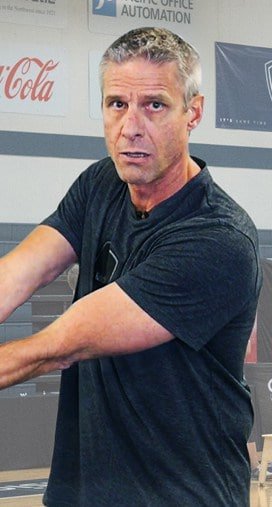
Mike Hebert | Formerly of the University of Minnesota
Many coaches subscribe to the idea that volleyball practices should be at least 3 hours. This line of thinking has been passed down over the generations from the highly publicized Japanese coaching styles of the 1960s and ’70s. They were known for long hours in the gym and brutal training regimens.
During those years, American volleyball was looking for a role-model program, and none were more regimented and outspoken than the Japanese. So we tried to become as Japanese as we could.
Whenever questions were asked about practice length, the standard answer would be, “We need the reps, so let’s go as long as we can.” It was assumed that unlimited reps equaled team success, so with one broad stroke of volleyball’s cultural brush, a beautiful, spontaneous “reading” game was transformed into a math assignment. The future seemed bright for coaches who could provide the most courts, the most training time, and the biggest roster of well-conditioned, heavily-repped athletes.
What we didn’t realize was that this overemphasis on performing endless repetitions of skills took away from time that could have been spent getting better at spontaneously reading the game and learning how to make good decisions. That involves quality practice, not quantity. We ignored the fact that other sports were mostly limiting practice sessions to about 2 hours.
I decided to step out of this box early in my career. During long training periods, I elected to train on a 3-days-on, one-day-off cycle while nearly everyone else was going on the conventional Monday to Friday schedule with weekends off. It was my belief that the 3-1 system provided a better spacing of stress and recovery. Athletes remained fresh, and there was no weekend overcrowding in the training room.
As seasons wore on, I shortened practice length to keep players fresh for the playoff run. While early season practices may have lasted 2.5 to 3 hours, our final practices at the end of a season were sometimes only an hour, maybe less. I even cancelled practices when I could see that too many players were exhausted or injured. Tapering isn’t only for swimmers.
It takes some self-discipline by coaches to embrace this less-can-be-more practice philosophy. When it comes down to it, it’s hard for us believe that a reduced amount of training will make our team better. All I can say is: Believe it! By the final weeks of the season, your athletes have played a lot of volleyball. Help them play their best when it counts most by giving them the down time they need to arrive at the gym with clearer heads, fresher legs and livelier arms.
You won’t regret it!
Mike Hebert is a retired college volleyball coach who coached at Pittsburgh, New Mexico, Illinois and, most recently, Minnesota. He guided the Gophers to a Big Ten championship in 2002 and three NCAA final four appearances (2003, 2004, 2009). His Illinois team reached the final four twice: 1987 and 1988.



